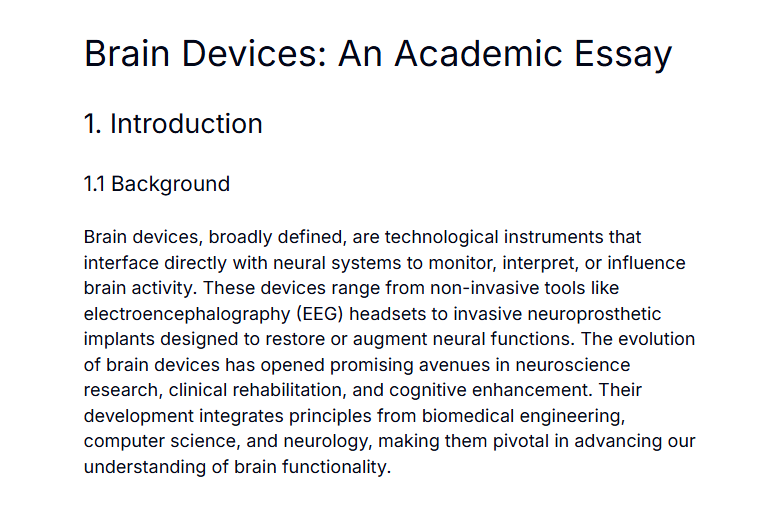Understanding Expository Essays: Structure, Strategies, and Persuasiveness
1. Introduction
1.1 Engaging hook
As academic landscapes evolve, the expository essay remains a foundational tool for students to convey complex ideas with clarity (“Expository Essays”).
1.2 Context/background
Expository essays are frequently assigned in secondary and post-secondary courses to assess a student’s ability to present clear explanations and structured arguments. This genre often employs strategies such as comparison and contrast, definition, example, and cause-and-effect analysis (“Expository Essays”). Many instructors recommend the five-paragraph approach—an introduction, three body paragraphs, and a conclusion—to ensure coherence and completeness (“Expository Essays”).
1.3 Thesis statement
By adhering to a structured format, employing focused topic sentences, integrating evidence effectively, and addressing counterarguments, expository essays strengthen readers’ comprehension and critical engagement.
2. First Body Paragraph
2.1 Topic sentence (first supporting point)
Central to the expository essay is its clear, predictable structure, which guides both writer and reader throughout the exposition.
2.2 Evidence and example
Purdue OWL explains that the expository genre is held together by a concise thesis statement, logical transitions, and body paragraphs each devoted to a single idea supported by evidence (“Expository Essays”). Moreover, transitions act as the mortar that holds the foundation of the essay together, preventing abrupt shifts in logic and maintaining the argument’s momentum (“Expository Essays”).
2.3 Explanation and link to thesis
This systematic organization not only clarifies the writer’s argument but also reinforces the thesis by ensuring that every section—from the opening hook to the final synthesis—serves the essay’s informative purpose.
3. Second Body Paragraph
3.1 Topic sentence (second supporting point)
Effective topic sentences play a pivotal role in framing each paragraph’s main idea and linking it back to the thesis.
3.2 Evidence and example
According to the Touro University Writing Center, a topic sentence must identify the paragraph’s overarching subject and controlling idea, typically appearing at the beginning to guide subsequent details (Topic Sentence). As Touro’s exercise demonstrates, “There are many reasons why pollution in ABC Town is the worst in the world” succinctly conveys both topic and direction, allowing supporting details to develop this focus (Topic Sentence).
3.3 Explanation and link to thesis
By succinctly stating both the topic and the writer’s stance, these sentences coordinate the paragraph’s evidence and analysis, strengthening the essay’s internal coherence and thereby supporting the overall argument.
4. Third Body Paragraph
4.1 Topic sentence (third supporting point)
Beyond structure and framing, integrating evidence and counterarguments elevates an expository essay’s analytical rigor.
4.2 Evidence and example
Indiana University’s Writing Tutorial Services advises that writers must not only present evidence but also comment on its significance to the claim, following a pattern of stating the claim, giving evidence, and then analyzing (“Using Evidence”). Furthermore, Harvey notes that acknowledging opposing viewpoints—respectfully stated and then refuted—demonstrates comprehensive critical thinking and strengthens the primary argument (Harvey).
4.3 Explanation and link to thesis
Through careful evaluation of supporting data and strategic refutation of alternative perspectives, writers craft more persuasive and nuanced expositions that align with their thesis and anticipate reader objections.
5. Conclusion
5.1 Restate thesis
Ultimately, expository essays succeed when they leverage structured organization, precise topic sentences, robust evidence integration, and thoughtful counterarguments to illuminate their subjects.
5.2 Summarize main points
Each component—from the well-defined thesis and systematic paragraph structure to the seamless incorporation of sources and respectful handling of opposing views—contributes to the essay’s clarity and depth.
5.3 Closing thought or call to action
As the San José State University Writing Center advises, writers should avoid formulaic phrases like “in conclusion” and instead synthesize insights while prompting further inquiry, ensuring that the ending resonates with readers (“Conclusion Section for Research Papers”). Aspiring writers are encouraged to apply these structural and rhetorical strategies in every academic or professional context to develop compelling, well-reasoned expositions.
Works Cited
“Counterargument.” University Writing & Speaking Center, University of Nevada, Reno, 1999,
https://writingcenter.fas.harvard.edu/pages/counter-argument.
“Conclusion Section for Research Papers.” San José State University Writing Center, Fall 2021,
https://www.sjsu.edu/writing-speaking-center/writing-speaking-resources/Conclusion%20Section%20for%20Research%20Papers.pdf.
“Expository Essays.” Purdue OWL®, Purdue University, 2018,
https://owl.purdue.edu/owl/general_writing/common_writing_assignments/expository_essays/index.html.
“Topic Sentence.” Touro University Writing Center,
https://www.touro.edu/departments/writing-center/tutorials/topic-sentence/#:~:text=Guidelines,or%20explain%20the%20topic%20sentence.
“Using Evidence: Writing Guides: Writing Tutorial Services.” Indiana University Bloomington,
https://wts.indiana.edu/writing-guides/using-evidence.html.
